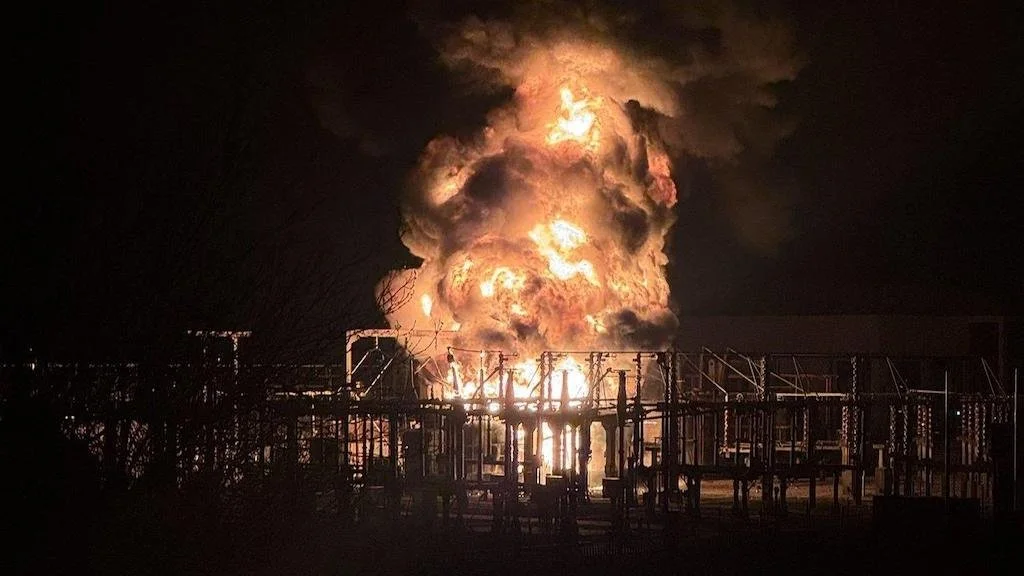Catastrophic failure led to Heathrow power outage
The power outage that left Heathrow airport in chaos earlier this year was caused by a catastrophic failure of equipment in the nearby North Hyde electricity substation.
According to the National Energy System Operator (NESO)’s final report into the 20 March incident, “This review has seen evidence that a catastrophic failure on one of the transformer’s high voltage bushings at National Grid Electricity Transmission’s 275kV substation caused the transformer to catch fire.”
Based upon analysis from both National Grid Electricity Transmission and London Fire Brigade, NESO reports the failure was most likely caused by moisture entering the bushing, causing an electrical fault.
An elevated moisture reading in the bushing had been detected in oil samples taken in July 2018 but mitigating actions appropriate to its severity were not implemented. National Grid Electricity Transmission has since initiated an end-to-end review of its oil sampling process, with a view to ensuring that it is robust.
The consequence of the electrical fault was the loss of all supplies from North Hyde, impacting thousands of customers, including Heathrow Airport.
This review found that the design and configuration of Heathrow Airport’s private internal electrical distribution network meant that the loss of one of its three independent supply points would result in the loss of power to some of the airport’s operationally critical systems.
While the airport had a plan to reconfigure their internal electrical distribution network to take power from the other two supply points, the process to do so took 10-12 hours. NESO’s review found this plan was not well-known by those outside the airports technical team and it was not known to the energy companies.
The impacts beyond Heathrow were also significant, affecting essential services including road, rail and Hillingdon Hospital, as well as thousands of homes and businesses. Residents living near the substation had to be evacuated with some needing alternative accommodation. Three data centres lost power but were able to continue operations through the use of backup generators.
The review also found that energy network operators are not generally aware whether customers connected to their networks are Critical National Infrastructure (CNI), and there is currently no explicit cross-sector requirement on CNI operators to ensure appropriate continuity of operations in response to power disruption. CNI facilities also have no priority within the electricity legal or regulatory framework. Work is underway, led by government, to identify and analyse cross-sector CNI interdependencies.
Fintan Slye, Chief Executive Officer, NESO said, “NESO’s final report into the North Hyde Substation outage sets out the root cause and a clear set of recommendations to further improve the resilience of Great Britain’s energy system, and the resilience of its critical national infrastructure.
“The power outage and closure of Heathrow airport were hugely disruptive and our report seeks to improve the way parties plan for and respond to these incidents, building on the underlying resilience of our energy system.
“All parties involved are focussed on working together to deliver these important recommendations and much of this work is already underway with NESO’s full support.
In response to the report’s findings, a Heathrow spokesperson said, “A combination of outdated regulation, inadequate safety mechanisms and National Grid’s failure to maintain its infrastructure led to this catastrophic power outage.”
A spokesperson for the Heathrow Reimagined, a coalition of airlines advocating for a fundamental review of Heathrow Airport’s regulatory framework said, “NESO highlights the lack of resilience and operational continuity, including known vulnerabilities in Heathrow’s private internal electrical distribution network. This is another example of Heathrow’s lack of operational resilience which is incentivised and enabled by a flawed regulatory framework.”

